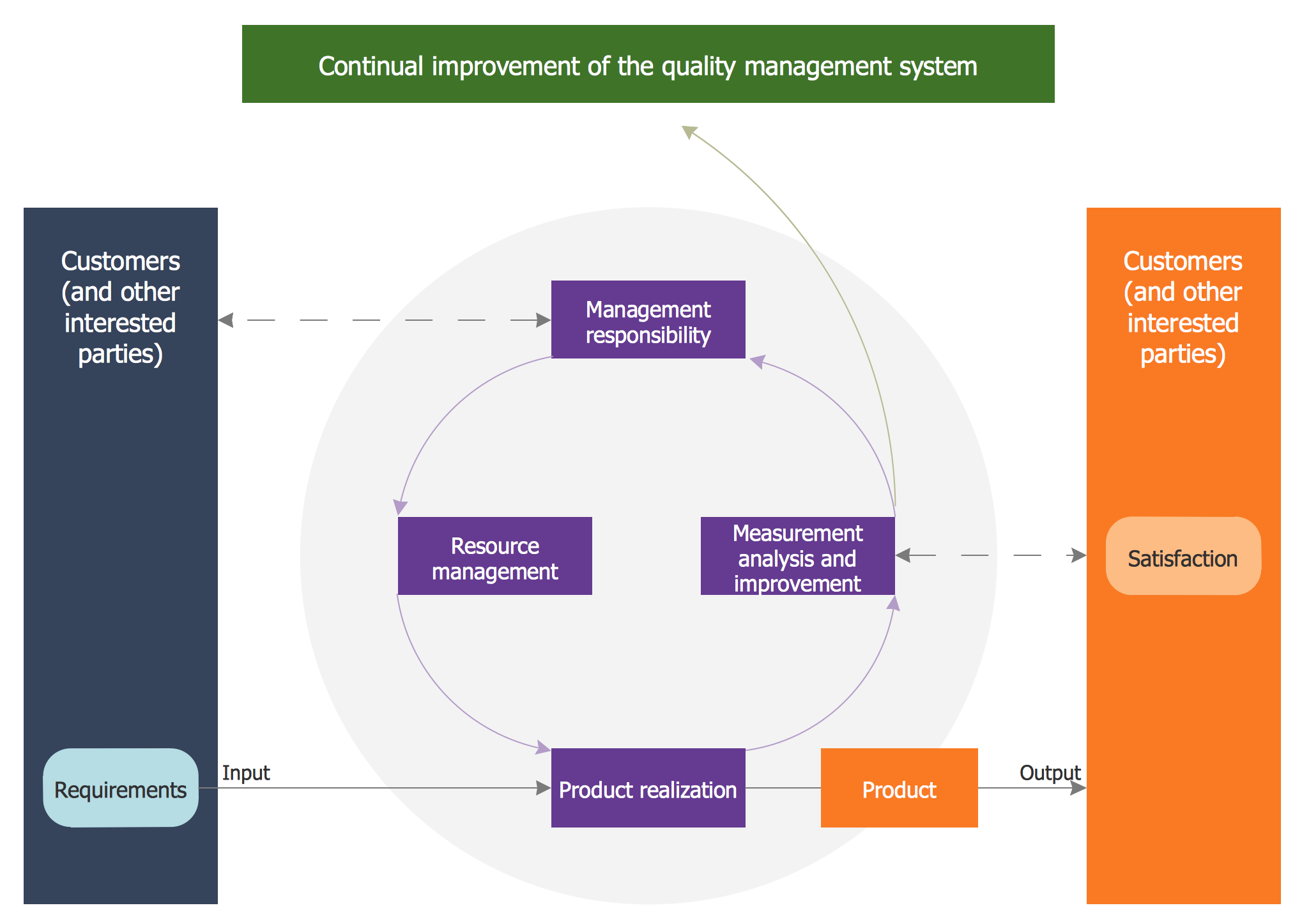ISO-9001
Proper quality management can improve your business. It can influence on having a positive effect on market share, sales growth, investment, sales margins, avoidance of litigation and competitive advantage. The general quality principles in ISO 9000:2000 are known to be sound. ISO 9000 guidelines can provide a comprehensive model for many quality management systems, making a company competitive in this way.
The 2015 version of the standard, according to ISO, brings such benefits as it helps the organizations define who is the one in charge for being affected by their work and what exactly they expect from it, enabling the clearly stated business goals as well as the identification of the new business opportunities. Among other benefits, there is a possibility for all organizations to identify as well as to address the risks that can be associated with their organization.
By putting customers in the first place, any organization can make sure that those who work for it can meet their customers’ needs, enhancing the customer satisfaction. This can lead to getting the new clients, increased business for the organization and more repeat custom.
Organizations that work in a more efficient way are known for fitting the ISO 9001 standard as all their processes are known to be aligned and well-understood by everyone which helps increases both efficiency and productivity, bringing the internal costs down. Organizations can meet all the necessary regulatory and statutory requirements, expanding into new markets, as some of the clients as well as sectors may require ISO 9001 before starting doing any business.
The ISO 9000 family of quality management systems standards is known for being designed in order to help the organizations ensure that they meet all the customers’ needs as well as other stakeholders’ ones while meeting both statutory and regulatory requirements that are related to some particular product or service. ISO 9000 is known to be dealing with the fundamentals of different quality management systems, such as the seven quality management principles — the base for the whole family of standards.
ISO 9001 deals with those requirements that organizations want to meet and which this standard must fulfill. Being first published in 1987 by the International Organization for Standardization, ISO 9000 was based on the BS 5750 series of standards from the British Standards Institution that were proposed to ISO in 1979.
The ISO 9000 series are known to be based on seven quality management principles, which are Customer focus (QMP 1), Leadership (QMP 2), Engagement of people (QMP 3), Process approach (QMP 4), Improvement (QMP 5), Evidence-based decision making (QMP 6) and Relationship management (QMP 7).
Customer focus is a principle number one as all the organizations depend on their customers, so they should be able to understand both current and future customers’ needs, meeting their customers’ requirements and striving to exceed the customers’ expectations. Leadership is the next principle, which helps establish the unity of direction and purpose of any organization. Both purpose and direction should create as well as maintain the internal environment, so people can get involved in achieving all the expected organization's objectives.

Pic. 1. House of Quality Interrelationship Matrix
Engagement of people is another important principle as people at all levels are simply essential to have for any organization and the more they are involved, the more their abilities can be used for the organization's benefit. The process approach is the next principle which claims that the desired result can be achieved in a more efficient way when both the activities and the related resources are managed as one process.
Next principle is an Improvement. It should be a permanent objective of any organization. Next, the sixth principle is an evidence-based decision making which is also essential due to any effective decision being based on the analysis of information and data. Principle number 7 is a relationship management: any organization as well as its external providers, such as contractors, suppliers, service providers and other counterparties, are known to be interdependent. A mutually beneficial relationship can enhance the ability of both sides to create the needed value.
ISO 9001:2015 Quality management systems include the requirements in a way of a document of approximately thirty pages. It is available from the national standards organization all over the world, but only ISO 9001 is known to be directly audited against for the third parties’ assessment purposes.
Contents of ISO 9001:2015 are Scope, Normative references, Terms and definitions, Context of the organization, Leadership, Planning, Support, Operation, Performance evaluation and Improvement. Before any certification body can either renew or issue any needed certificate, its auditor must be satisfied that the company that is being assessed has implemented the requirements of Context of the organization, Leadership, Planning, Support, Operation, Performance evaluation and Improvement. The Scope, Normative references and Terms and definitions sections (1 to 3) are not directly audited against, but for a reason of them providing the context as well as the definitions for the rest of the standard, their contents must be taken into consideration.
There are a few more articles about the quality management on this site which might help understand more about this field of business activity. In case the drawings have to be made, it is always possible to download the ConceptDraw DIAGRAM diagramming and drawing software from this site so it becomes easier to create the needed diagrams using the pre-made elements, such as those which are available for all ConceptDraw DIAGRAM users in the basic stencil libraries, or the ones from the House of Quality solution from the ConceptDraw STORE.
